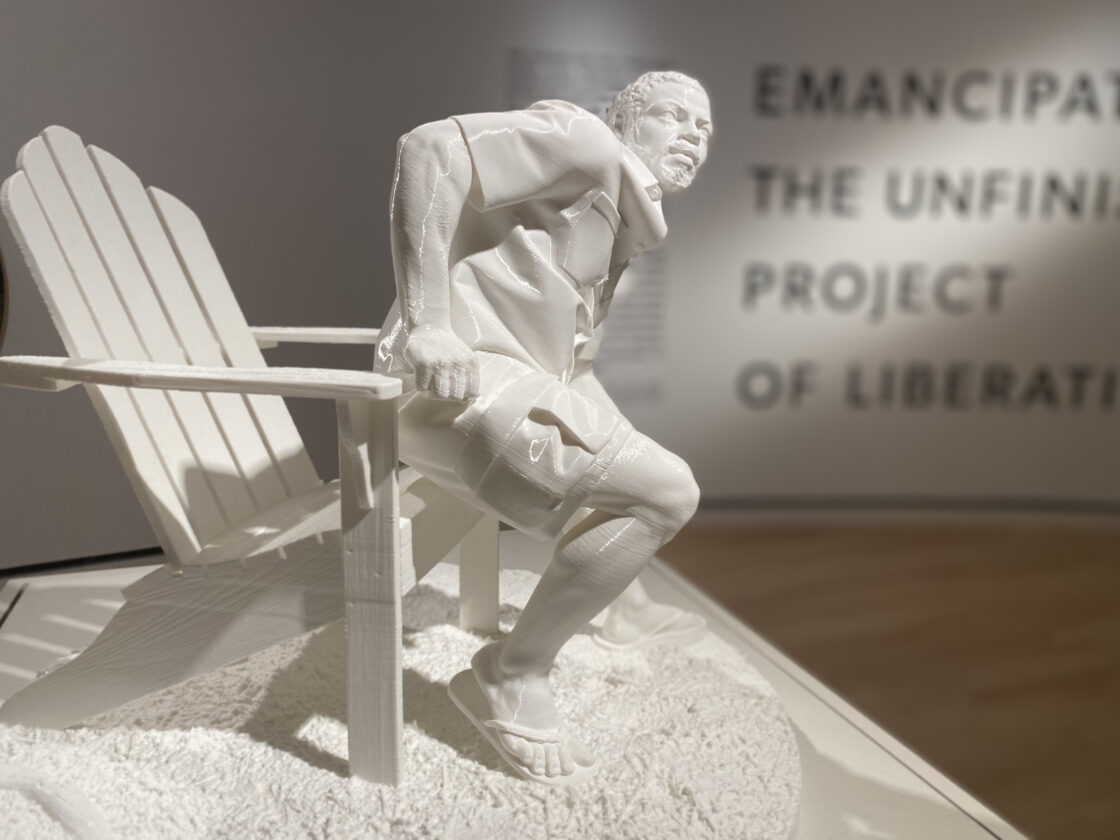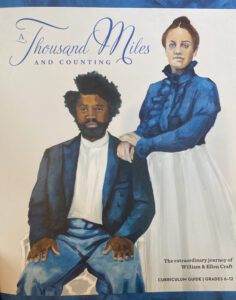Savannah is my spirit hometown. As a southerner I am sadly comfortable with the queasy contradictions of this once Confederate slavery capital that still quietly transacts on plantation culture. It’s exactly Savannah’s ironies that draw me in and keep me returning. A grudgingly progressive town that’s still stuck between tradition and evolution, Savannah is diverse if still segregated. It’s also home to meaningful universities, a vibrant arts community, incredible food and a nationally recognized legacy of historic preservation leadership.
The coastal town that still serves as a major transport highway also hosts a surprising mix of museums, from regional jewels like the Jepson Center and the SCAD Museum of Art to historic homes and Civil Rights focused facilities.
Just back from a rainy weekend in the Hostess City. Check out these reviews of my favorite Savannah museum exhibits, on view now!
A Thousand Miles and Counting At SCAD Museum of Art
Not quite an exhibit, this short video and small painting series takes up only a few square feet of the bright and airy upper level of the SCAD museum building. A hallway, really, has been transformed into a place for listening and learning by situating two benches and a TV screen. There we learn about William and Ellen Craft, a remarkable couple who escaped slavery near Macon, passing through the train station where SCAD now sits and getting all the way to London before returning to the Savannah area to establish a home and business.
The story of their escape reads like a novel with Ellen, sufficiently light skinned to pass for white and dressed to appear as male. Her husband William would play her manservant as they traveled by train up the coast and ultimately across the ocean. The power of this not quite an exhibit is found when I allow our imagination to drift into their experience. Imagine if I were in physical bondage with no example of a different life to look forward to? Imagine if I one day decided to risk everything to become free? Imagine if my husband had to pretend to be subservient to me? Imagine if I had the guts and the ability to pretend to be a man? Imagine the constant fear of being found out? Imagine the relief of setting foot in a free territory? With this unassuming presentation SCAD asks we visitors to honor the Crafts in the only way we really can: transport ourselves into their reality and sincerely, actively imagine.
Isabel Toledo: A Love Letter At SCAD Museum of Art through December 16
Yes, A Love Letter could be just another fashion exhibit and a small one at that. A narrow, long space packed with the usual ethereal, faceless mannequins and their impossibly long limbs. Yes, these figures sport the delectable creations of Toledo, a Cuban-American designer probably best known to the average person for dressing Michelle Obama in the first inauguration. That coat!
I’ve been to dozens of fashion exhibits over the years. It’s just plain difficult to make them feel unique and high impact. Sure, each designer’s work will pack its own kind of curatorial punch but after a while these shows are all simply plastic forms arranged in lines wearing clothes.
What sets SCAD’s ode to Toledo apart is the wall-sized video projection running alongside the tailored objects. Reuben, her husband and creative and business partner, introduces you to Isabel’s design, personality and history. We see her through his eyes which are full of grace, appreciation, passion and love for their lives together.
Rather than bog down wall placards with loads of tiny text or strand the information in QR coded websites this presentation transports us into the Toledo’s life experience through immediately knowable images and sound. We see Isabel in archival footage, hear her voice, witness Reuben’s adoration and respect for her through his own words and his own beaming smile. We can sit alongside his described grief at losing her to death in 2019 and marvel at the dynamic of their home-based studio process.
Certainly other exhibits have employed video to complement its materials on view. But this short film was directed not to be educational so much as to be emotive. We weren’t asked to learn about Isabel and Reuben and their process for making innovative clothes. Instead we were invited into the soft spot of their love, from which their innovative clothing sprang and a business flourished.
I found myself standing, crying at the beauty of these two souls and the creations their bond produced.
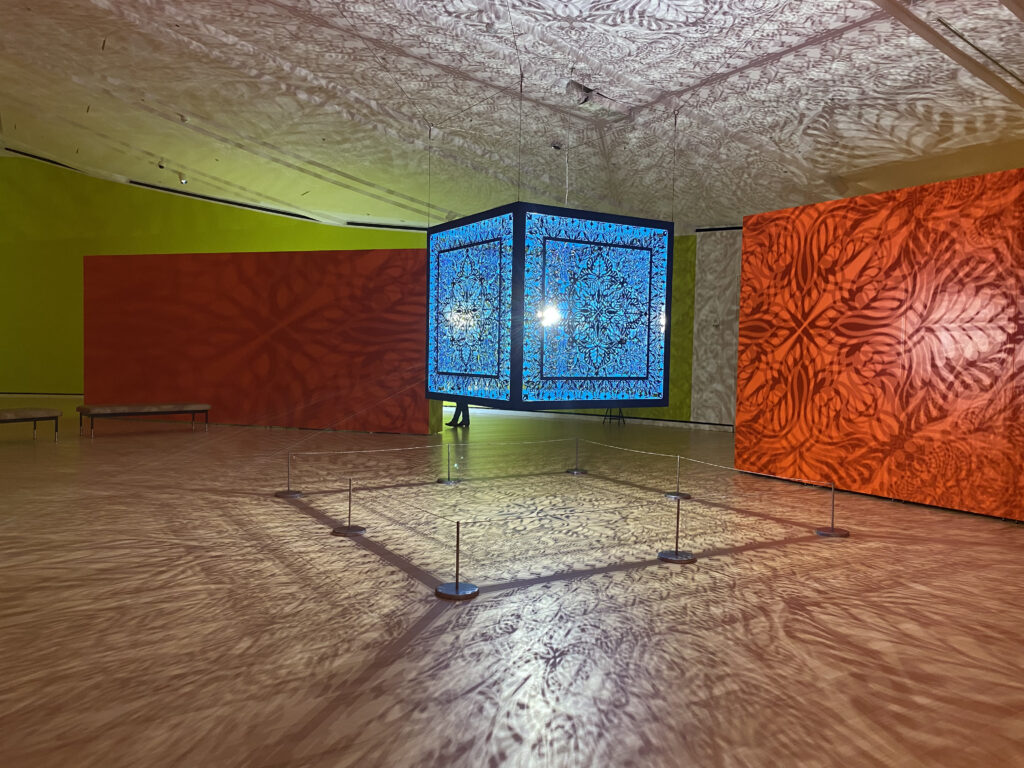
A Measure of Time At the Jepson Center through September 15
Artist Anila Quayyum Agha has taken away my breath. Entering the primary exhibit space featuring the centerpiece A Beautiful Despair is like a shot of dopamine that produces an involuntary and audible ‘wow’. The electric turquoise stainless steel cube almost floats from the ceiling, its intricate Alhambra-inspired panels and halogen bulb casting shadows for miles beyond its own circumference. The fine lined design projects like a miracle on the ceiling, the floor, the walls, the faces of visitors, some are sharp and crisp while others are fuzzy and diluted. The glow of the light warmed my face and brought me in, physically, to the work.
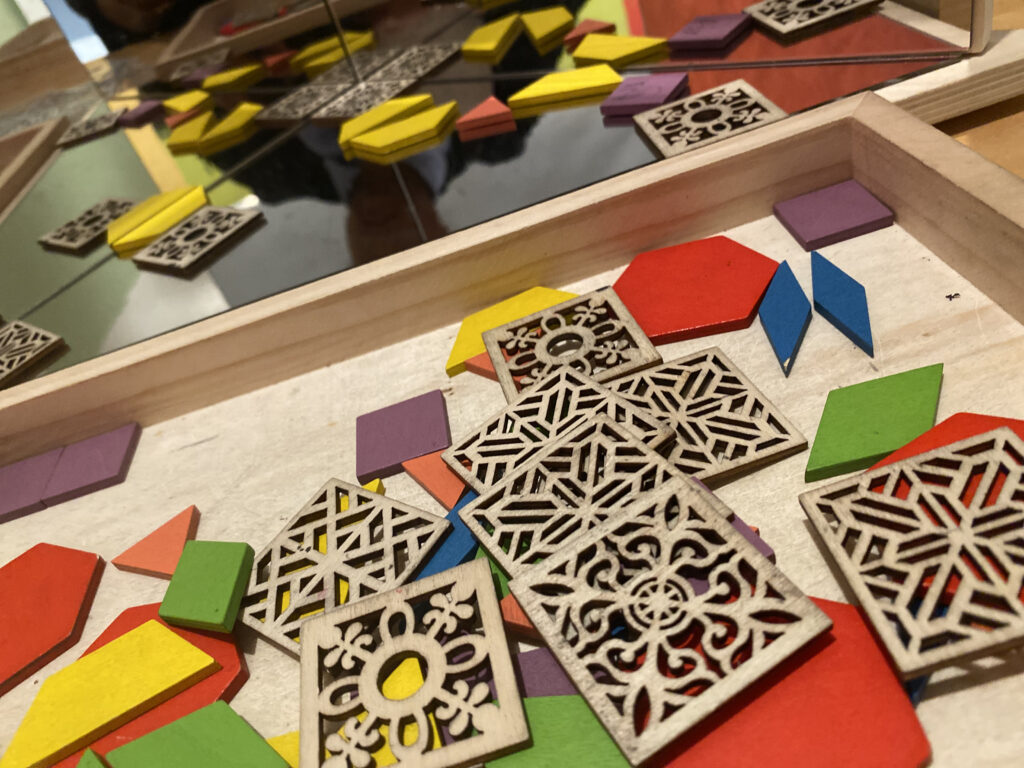
It is not very often that I am genuinely surprised and delighted by a work of art. Agha intends to comment on gendering in art and to create meditative space for different experiences and perspectives to emerge and interact. Her work has also created a literal refraction where we can each immerse and reflect. And I particularly love the interactive family activity where kids can use stencils and stamps to create their own symmetrical mirrored design. No photo will do her pieces justice, so you’ll have to visit for yourself.
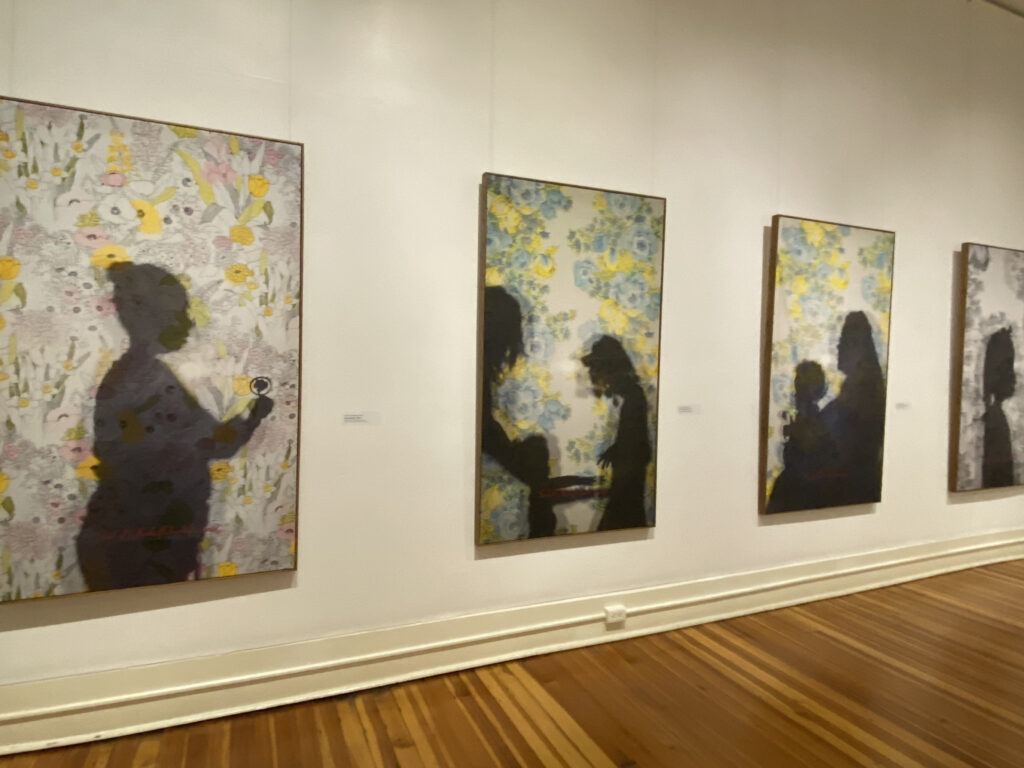
Emancipation: The Unfinished Project of Liberation At Jepsen Center and Telfar Academy through November 24
Mounted to commemorate the 160 year anniversary of Lincoln’s Emancipation Proclamation, this exhibit both remembers and celebrates that milestone while questioning how permanent its dictum has remained. While the experience is anchored in the bronze sculpture The Freedman of the same era, completed by John Quincy Adams Ward, most of the materials in the show are decidedly current. Living artists like Maya Freelon and Letitia Huckaby opine through their works on what it means to be emancipated, the global nature of the concept and what is still lacking in the realization of that liberating condition.
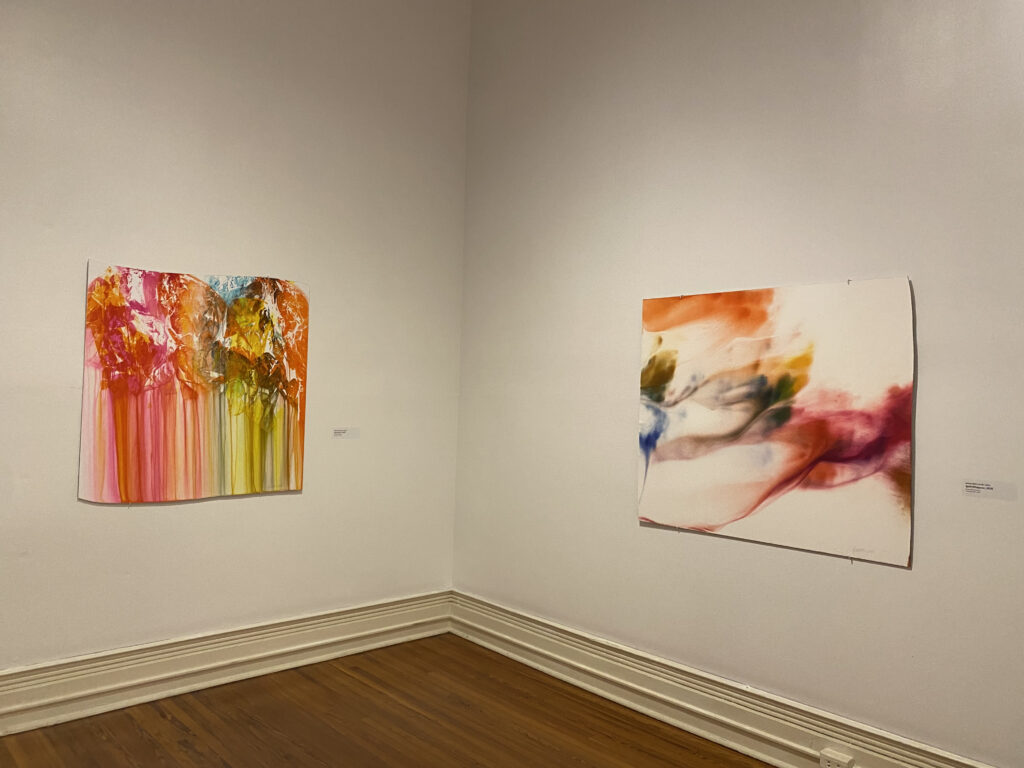
Freelon’s techno colored ink on tissue is invigorating, full of promise, harkening to African textiles and a masterful balance of structure and impermanence, just like freedom itself. Huckaby’s rich takes on portraiture and photography leverage sillohouette, print and needlepoint traditions to compare once thriving black communities and populations to current conditions, often depressed. Hugh Hayden directly challenges Ward’s series of newly freed men with a plastic sculpted man in suspended leisure, asking whether there is such a thing as rest after enslavement. And Jeffrey Meris forces technology and the body into uneasy conversation with a pair of automated sculptures that move with the weight of ‘the grind’. Described by a small child as ‘creepy’, I cannot quite disagree. Sometimes a thing has to be creepy to make its point.
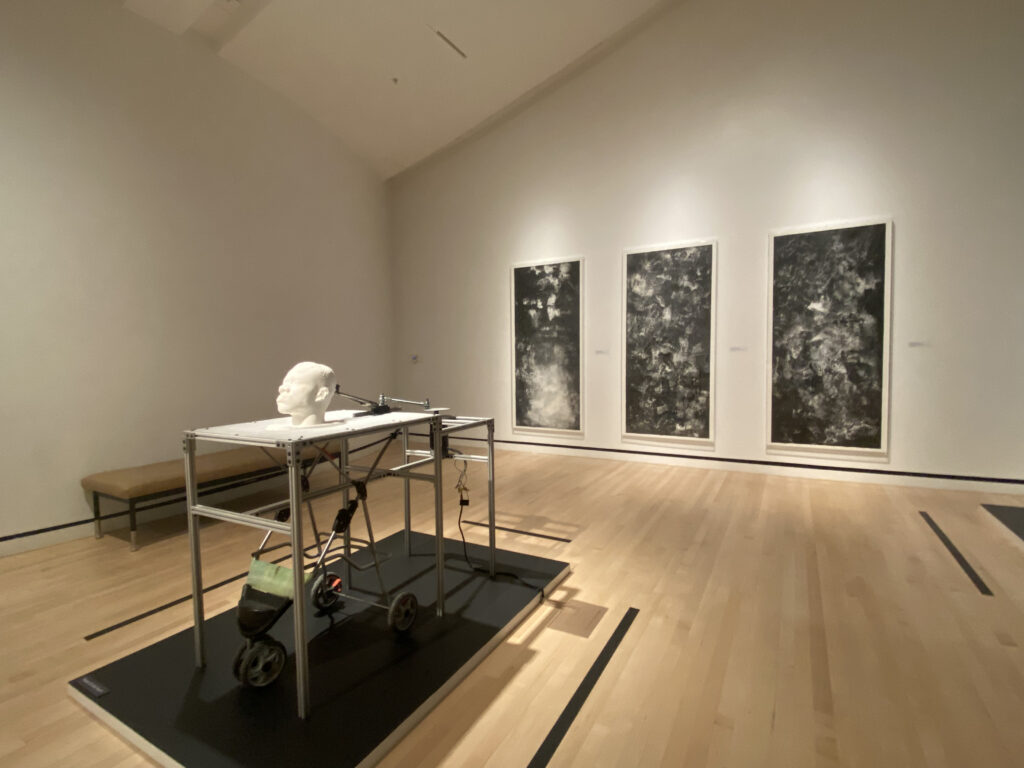
This exhibit is shared between two of the Telfair group’s three museum locations, in a clever approach to driving mutual visitation and engagement. Though this exhibit did not originate here it is perfectly set in Savannah whose dark and complex history as a leading slave port make it an ideal context for a discussion about historical and ongoing emancipation. The Telfair family was itself a slaveholding enterprise though the museum doesn’t touch on that in this exhibit or others, if memory serves. That missed opportunity to acknowledge the sins of its own past is a meaningful gap in the exhibit’s impact. For those of us in the know, that omission serves to deepen the significance and poetic nature of the show. Perhaps one day the presenting museum will emerge from the curtain to take its place as a subject by intentionally centering its own role in both the captivity and the liberation.
Arboretum At SCAD Museum of Art through December 30
“If a tree falls in the Metaverse, does it make a noise?”
What a foundational question to inspire and fuel an exhibit! Artist collaborators Jiten Thukral and Sumir Tagra answer this question with a series of large format non-traditional shapes painted in traditional, manual methods to look like digital aberrations. A unique combination of natural scenes and elements and pixilated staggers the works seem less like paintings and more like reproduced computer animations, I think that’s what they were going for. What’s real, what’s imagined and what’s artificially created, the lines are blurred in this project and that seems to be the point.
In their pieces if a tree falls there is created a quiet and subtle rupture, a snowy 80s tv-reiminscent square of error situated somewhere off center. I was left wondering whether it was the underlying natural scene or that square of error that the artists are expressing. Or, more likely it’s the interplay between them that they are challenging. In this age of AI everything, they seem to ask us whether there is even such a thing as natural anymore?

